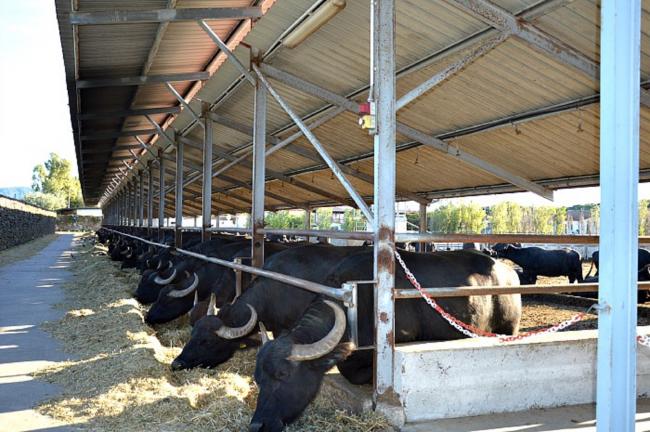Improvement of forage production in Campania Region

Winter annual forages with high percentages of legume species can improve forage production in environmental condition of Campania Region
- Reduction of concentrates in rations
- Improvement of sensorial and nutraceutical characteristics of milk and mozzarella cheese from cows and buffaloes
- Genetic selection of buffaloes that have more desirable milk quality
- The reduction of production costs along with the increment of selling price of milk/mozzarella with enhanced nutraceutical and sensorial characteristics can ultimately raise farm income
- WP1 Production of winter annual forages with high percentages of legume species
- WP2 Feeding lactating cows and buffaloes with the produced forages. Assessment of milk yield and quality
- WP3 Assessment of nutraceutical and sensorial characteristics of milk and cheese
- WP4 Analysis of genetic variability influencing buffalo milk yield and quality
- WP5 Partial budget analysis and marketing strategies
- WP 6 Dissemination of results
In Campania Region, dairy farming presents different features from area to area. Intensive buffalo farming for mozzarella production is concentrate on the coastal areas, whereas extensive or semi extensive dairy cattle farming prevails the internal areas of Region. Although these different features, both sectors need improvement of their economic and environmental sustainability by reducing production costs and by entering into market niches allowing them to differentiate against national and international competitors. Since forages are the main diet component for dairy cows, it follows that their quality directly impacts the performance of lactating animals, the nutrient and energy balance at farm level, and, ultimately, the farm income given that feeding makes up a large proportion of variable costs. Winter forage crops are an important portion of regional forage production, so that their enhancement may reduce the purchase of external feed inputs, may improve product quality and may reduce the environmental impact of dairy farming. Nowadays, new improved forage mixtures adapted at different environments are available. Their use can allow increasing the potential for feed energy and protein from forage.
The process innovation consists of the implementation of new winter forage mixtures with a high incidence of legume species in livestock farming. Such process innovation can be implemented in a large part of Campania’s ruminants’ farming sector and will have a positive impact from the agronomic, economic and, quality product points of view.
The presence of both grass and legume species in the forages will allow, on one hand, increasing the dietary protein from forage without affecting forage production and, on the other, to reduce the purchase of concentrates, so reducing the feeding costs that make up a large share of variable costs. Also, such implementation can also improved soil fertility and environmental sustainability of farms due to the nitrogen-fixing action of legumes’ roots. Moreover, the increment of forage in the ration for lactating cows along with the genetic selection of individuals able to produce milk with a healthier acidic profile can improve the nutritional and sensorial characteristics of dairy products that can gain a market premium price.
Finally, the innovation will be also able to improve the health and well-being of animals thanks to the use of rations more appropriate with respect to the ruminants’ physiology.
The process innovation consists of the implementation of new winter forage mixtures with a high incidence of legume species in livestock farming. Such process innovation can be implemented in a large part of Campania’s ruminants’ farming sector and will have a positive impact from the agronomic, economic and, quality product points of view.
The presence of both grass and legume species in the forages will allow, on one hand, increasing the dietary protein from forage without affecting forage production and, on the other, to reduce the purchase of concentrates, so reducing the feeding costs that make up a large share of variable costs. Also, such implementation can also improved soil fertility and environmental sustainability of farms due to the nitrogen-fixing action of legumes’ roots. Moreover, the increment of forage in the ration for lactating cows along with the genetic selection of individuals able to produce milk with a healthier acidic profile can improve the nutritional and sensorial characteristics of dairy products that can gain a market premium price.
Finally, the innovation will be also able to improve the health and well-being of animals thanks to the use of rations more appropriate with respect to the ruminants’ physiology.